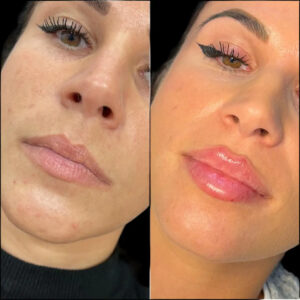When a stuffy nose takes over your day and night, it’s not just annoying nasal congestion can disrupt sleep, concentration, even your mood. In this post, we break down what causes nasal congestion, its key stuffy nose symptoms, and how to get fast relief for a clearer, easier breathing experience.
What Is Nasal Congestion & Why It Happens
Nasal congestion commonly called a stuffy nose occurs when the tissues lining the nose become swollen with excess fluid and mucus.
It’s your body’s response to irritants, infection, or allergens.
Understanding the “why” behind nasal congestion helps you treat it smartly.
Common Triggers of Nasal Congestion
- Allergies (pollen, dust mites, pet dander) these prompt your nasal passages to swell and produce mucus, leading to congestion.
- Viral infections like the common cold or flu viruses irritate the nose lining, triggering inflammation and congestion.
- Structural problems (deviated septum, nasal polyps) these block airflow and make congestion more persistent.
The Role of Inflammation & Mucus
When a trigger irritates your nasal lining, the body sends immune signals that cause blood vessels to expand. This leads to swelling and more mucus production.
So the more inflamed the tissues, the worse the nasal congestion you feel.
Mucus then clogs your passages, contributing to that blocked sensation.
Seasonal & Environmental Factors
Dry air, cold weather, pollution, or indoor heating can dry or irritate nasal tissues and make congestion worse.
Sudden shifts in humidity or temperature may aggravate nasal congestion and intensify stuffy nose symptoms.
Recognizing the Stuffy Nose Symptoms
While many people use “stuffy nose” and “nasal congestion” interchangeably, the symptoms can vary.
Here are hallmark stuffy nose symptoms that often accompany nasal congestion.
Key Sensations & Signs
- A blocked or “clogged” feeling in one or both nostrils
- Difficulty breathing through the nose or mouth breathing
- Reduced sense of smell or taste
Secondary or Associated Symptoms
- Postnasal drip (mucus dripping down the throat)
- Sinus pressure or facial pain
- Snoring or disturbed sleep
When to Worry Red Flags
If nasal congestion is accompanied by high fever, colored nasal discharge lasting more than
10 days, or facial swelling, seek medical advice.
Persistent congestion unresponsive to standard remedies may indicate underlying issues like sinusitis or structural problems.
Effective Strategies to Relieve Nasal Congestion
Here’s your action plan straightforward ideas to ease nasal congestion, reduce stuffy nose symptoms, and help you breathe freely again.
Home Remedies & Lifestyle Hacks
- Steam inhalation: Breathe in steam over a bowl of hot water (covering head with a towel) for 5–10 minutes.
- Humidifier use: Adding moisture to the air helps thin mucus and reduce nasal inflammation.
- Saline sprays or rinses: Use isotonic or hypertonic saline to flush and moisturize your nasal passages.
These simple hacks offer fast, gentle relief from nasal congestion.
Over-the-Counter Medications
- Decongestant nasal sprays (oxymetazoline) can reduce swelling quickly but don’t use for more than 3 days to avoid rebound congestion.
- Oral decongestants (pseudoephedrine) may help more severe congestion (check with your provider if you have high blood pressure).
- Antihistamines help if allergies are the root cause of your nasal congestion.
Use medications judiciously and follow directions for safety.
When to See a Doctor
- If congestion lasts more than 10–14 days despite remedies
- Repeated or chronic nasal congestion interfering with daily life
- Presence of sinus pain, facial swelling, or worsening headaches
Your doctor can rule out structural causes, chronic sinusitis, or nasal polyps, and recommend targeted treatment.
Frequently Asked Questions (FAQs)
Q1: How long does nasal congestion usually last?
A1: For viral colds, nasal congestion typically improves within 7–10 days. If symptoms persist beyond 10–14 days, it may be due to sinus infection, allergies, or structural issues.
Q2: Can nasal congestion cause ear problems?
A2: Yes. When nasal passages are blocked, pressure in the Eustachian tube (connecting your nose to your ears) can’t balance. This may lead to ear fullness, pop sounds, or even temporary hearing changes.
Q3: Are nasal decongestant sprays safe long term?
A3: No. Nasal decongestant sprays (like oxymetazoline) should not be used for more than 3 to 5 days. Prolonged use can cause rebound congestion, where your nose becomes more congested once the spray wears off.
Conclusion
Nasal congestion and its annoying stuffy nose symptoms can throw off your day but with awareness and the right strategies, you can get relief fast.
Start with gentle home remedies like steam, humidifiers, and saline rinses. Use over‑the‑counter options when needed (but smartly).
If congestion lingers, or is severe, it’s best to seek medical advice.
Your nose is striving to protect you honoring it with care, patience, and safe treatments goes a long way toward helping you breathe easy again.
Nasal congestion and its annoying stuffy nose symptoms can throw off your day but with awareness and the right strategies, you can get relief fast.
Nasal congestion and its annoying stuffy nose symptoms can throw off your day but with awareness and the right strategies, you can get relief fast.




